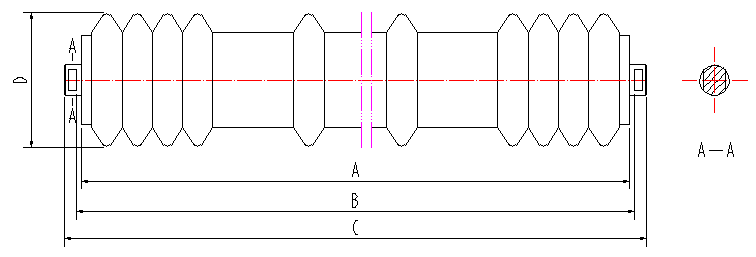 Afrikaans
Afrikaans  Albanian
Albanian  Amharic
Amharic  Arabic
Arabic  Armenian
Armenian  Azerbaijani
Azerbaijani  Basque
Basque  Belarusian
Belarusian  Bengali
Bengali  Bosnian
Bosnian  Bulgarian
Bulgarian  Catalan
Catalan  Cebuano
Cebuano  Corsican
Corsican  Croatian
Croatian  Czech
Czech  Danish
Danish  Dutch
Dutch  English
English  Esperanto
Esperanto  Estonian
Estonian  Finnish
Finnish  French
French  Frisian
Frisian  Galician
Galician  Georgian
Georgian  German
German  Greek
Greek  Gujarati
Gujarati  Haitian Creole
Haitian Creole  hausa
hausa  hawaiian
hawaiian  Hebrew
Hebrew  Hindi
Hindi  Miao
Miao  Hungarian
Hungarian  Icelandic
Icelandic  igbo
igbo  Indonesian
Indonesian  irish
irish  Italian
Italian  Japanese
Japanese  Javanese
Javanese  Kannada
Kannada  kazakh
kazakh  Khmer
Khmer  Rwandese
Rwandese  Korean
Korean  Kurdish
Kurdish  Kyrgyz
Kyrgyz  Lao
Lao  Latin
Latin  Latvian
Latvian  Lithuanian
Lithuanian  Luxembourgish
Luxembourgish  Macedonian
Macedonian  Malgashi
Malgashi  Malay
Malay  Malayalam
Malayalam  Maltese
Maltese  Maori
Maori  Marathi
Marathi  Mongolian
Mongolian  Myanmar
Myanmar  Nepali
Nepali  Norwegian
Norwegian  Norwegian
Norwegian  Occitan
Occitan  Pashto
Pashto  Persian
Persian  Polish
Polish  Portuguese
Portuguese  Punjabi
Punjabi  Romanian
Romanian  Russian
Russian  Samoan
Samoan  Scottish Gaelic
Scottish Gaelic  Serbian
Serbian  Sesotho
Sesotho  Shona
Shona  Sindhi
Sindhi  Sinhala
Sinhala  Slovak
Slovak  Slovenian
Slovenian  Somali
Somali  Spanish
Spanish  Sundanese
Sundanese  Swahili
Swahili  Swedish
Swedish  Tagalog
Tagalog  Tajik
Tajik  Tamil
Tamil  Tatar
Tatar  Telugu
Telugu  Thai
Thai  Turkish
Turkish  Turkmen
Turkmen  Ukrainian
Ukrainian  Urdu
Urdu  Uighur
Uighur  Uzbek
Uzbek  Vietnamese
Vietnamese  Welsh
Welsh  Bantu
Bantu  Yiddish
Yiddish  Yoruba
Yoruba  Zulu
Zulu Exploring the Advantages of Vertical Roller Mills in Modern Industry
Exploring the Vertical Roller Mill A Modern Marvel in Material Processing
In the world of industrial manufacturing, efficiency and precision are key drivers of productivity. Among the technologies that have revolutionized material processing are vertical roller mills (VRMs). This innovative grinding equipment has gained significant traction across various sectors, particularly in cement and mineral industries. In this article, we will explore the functionality, advantages, and applications of vertical roller mills.
Understanding Vertical Roller Mills
A vertical roller mill is a type of grinding machine that is used to grind solid materials into fine powders. Unlike traditional ball mills, which operate with a horizontal orientation and use steel balls for grinding, vertical roller mills employ a combination of rotating grinding tables and high-pressure roll presses to achieve superior milling efficiency.
The design features a vertical spindle that supports a grinding table, which rotates under a set of rollers. As materials are fed into the mill, gravity aids their movement, and the rollers compress the material against the grinding table, breaking it down into fine particles. This unique configuration contributes to its effectiveness in handling a wide range of materials, including coal, cement, and various minerals.
Advantages of Vertical Roller Mills
One of the standout advantages of vertical roller mills is their energy efficiency
. Traditional ball mills consume significant power, often leading to high operational costs. In contrast, VRMs use less energy because they utilize the material's own weight for grinding, requiring less external energy input. Reports suggest that VRMs can reduce energy consumption by up to 30% compared to conventional grinding mills.Another important advantage is the vertical roller mill's ability to produce a finer product. The high compressive forces exerted by the rollers allow for a more uniform particle size distribution, which is crucial in many applications, such as the production of high-quality cement. Additionally, the reduced wear and tear on machinery components result in lower maintenance costs and extended equipment lifespan.
vertical roller

Vertical roller mills also boast a smaller footprint compared to traditional mills. Their vertical design means they occupy less ground space, making them an attractive option for companies operating with spatial constraints. Furthermore, the modular nature of VRMs allows for easier integration into existing manufacturing systems.
Applications of Vertical Roller Mills
Vertical roller mills have found applications in various industries beyond cement production. In the mining sector, they are used for grinding ores and minerals, contributing to more efficient extraction processes. Their ability to handle materials with varying hardness and moisture content makes them versatile and reliable in this field.
In the food industry, VRMs are utilized for grinding grains and spices, allowing for consistent particle size and flavor extraction. The pharmaceutical sector has also begun to embrace this technology, where precision milling plays a crucial role in drug formulation and production.
Moreover, as industries look to adopt greener practices, vertical roller mills are emerging as a more sustainable option. Their lower energy consumption and reduced emissions during operation align with the global shift towards environmentally friendly manufacturing processes.
Conclusion
In conclusion, vertical roller mills represent a significant advancement in the field of material processing. Their energy efficiency, ability to produce finer products, compact design, and versatility across various industries make them a preferred choice for manufacturers aiming to optimize their operations. As industries continue to evolve and seek sustainable solutions, the role of VRMs is likely to expand, further solidifying their place in modern manufacturing.
As we look to the future, the ongoing development of vertical roller mills will undoubtedly bring forth new innovations that will enhance their capabilities and applications, setting the stage for a more efficient and sustainable industrial landscape.
-
Revolutionizing Conveyor Reliability with Advanced Rubber Lagging PulleysNewsJul.22,2025
-
Powering Precision and Durability with Expert Manufacturers of Conveyor ComponentsNewsJul.22,2025
-
Optimizing Conveyor Systems with Advanced Conveyor AccessoriesNewsJul.22,2025
-
Maximize Conveyor Efficiency with Quality Conveyor Idler PulleysNewsJul.22,2025
-
Future-Proof Your Conveyor System with High-Performance Polyurethane RollerNewsJul.22,2025
-
Driving Efficiency Forward with Quality Idlers and RollersNewsJul.22,2025





























